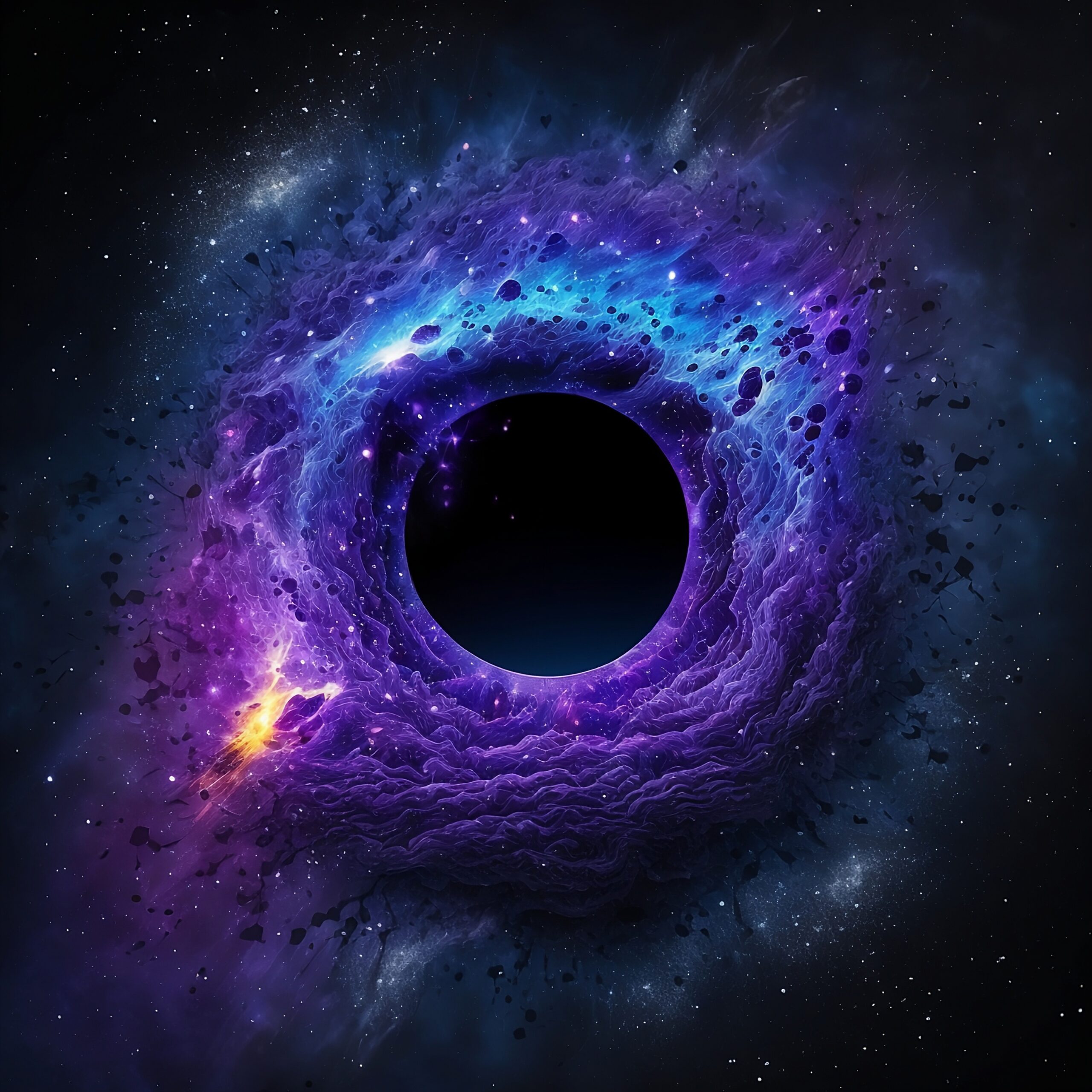Introduction
Imagine a space so heavy that not even light can get out—this is what we call a black hole. These mysterious objects make us rethink how we understand physics and reality. Could they be paths to other dimensions or different realities? As we explore these powerful forces, we might discover secrets that change how we see the universe and our role in it. What mysteries are hidden beyond the edge of a black hole, and could they help us understand the nature of reality itself?
An interesting question comes up: Can black holes be doors to other universes? This idea, often seen in science fiction, sparks our curiosity and challenges what we know about physics. Black holes are areas in space where gravity is so strong that nothing— not even light—can escape. If these cosmic wonders could link to other parts of space and time, they might work like portals to different realities or even completely new universes.
In recent years, ideas like the multiverse theory and wormholes have gotten physicists and cosmologists talking. If black holes could really act as doorways to other places, what would that mean for how we understand existence, cause and effect, and the basic laws of nature? Thinking about this question leads to an exciting conversation about what the universe is really like and the limits of what we can know.
Understanding Black Holes
Black holes are areas in space where gravity is so strong that nothing can escape, not even light. They form from massive stars that collapse at the end of their lives. When a star runs out of fuel, it can’t hold itself up against gravity anymore, which causes it to implode and create a black hole.
Event Horizon: The event horizon is the “point of no return” around a black hole. Once something crosses this line, it can’t escape the black hole’s gravity. For someone watching from outside, time seems to slow down as an object gets closer to the event horizon, making it look like the object never actually crosses it.
Singularity: At the center of a black hole is the singularity, a point where gravity squeezes matter into an infinitely dense state. At this point, the laws of physics no longer work as we understand them, and the bending of space and time becomes infinite. The singularity is hidden behind the event horizon, which makes it one of the most mysterious parts of black holes.
Wormholes
Wormholes: Wormholes are theoretical passages through space and time that could create shortcuts between faraway places in the universe. They come from the equations of general relativity and are sometimes called “Einstein-Rosen bridges,” named after the physicists who suggested they might exist in the 1930s. Here’s how they’re imagined:
Structure: A wormhole is thought of as a tunnel with two openings, each leading to different points in space and time. You can picture it like a folded piece of paper with two holes punched in it; if you draw a line between the holes, that line represents the wormhole connecting the two spots, possibly shortening the distance between them.

Page URL: https://commons.wikimedia.org/wiki/
Attribution: Alain r, CC BY-SA 3.0 https://creativecommons.org/licenses/by-sa/3.0, via Wikimedia Commons
Types of Wormholes:
Traversable Wormholes: These are imagined structures that could let things, including people, pass through. They would need to stay stable and not collapse, possibly requiring special “exotic matter” with negative energy to keep them open.
Non-Traversable Wormholes: These might exist, but they would collapse too quickly for anything to go through, making them useless for travel.
Theoretical Foundations
General Relativity:
General relativity, developed by Albert Einstein in 1915, is an important theory that explains gravity not as a force, but as the bending of space and time caused by mass. According to this theory:
- Massive objects, like stars and planets, change the shape of space and time around them.
- The larger the object, the more it bends space, which is what we feel as gravity.
Event Horizon and Singularity:
It predicts that black holes have an event horizon, which is a boundary beyond which nothing can escape. It also describes the singularity at the center, where space and time bend infinitely.
Gravitational Waves:
General relativity predicts gravitational waves, which are ripples in space and time caused by moving masses. This has led to major discoveries, including the detection of black holes merging.
Overall, general relativity has been essential in shaping modern astrophysics and our understanding of the universe, providing a framework that scientists continue to test and improve through observation and experiments.

Page URL: https://commons.wikimedia.org/wiki/
Attribution: Astrophysicist12, CC BY-SA 4.0 https://creativecommons.org/licenses/by-sa/4.0, via Wikimedia Commons
Conclusion
The idea that black holes might act as doors to other realities encourages us to think deeply about big questions related to existence, the nature of time, and the chance of parallel universes. What is beyond the event horizon? Could there be other dimensions or even completely different universes that we can reach through these cosmic gateways?
Share the knowledge with

